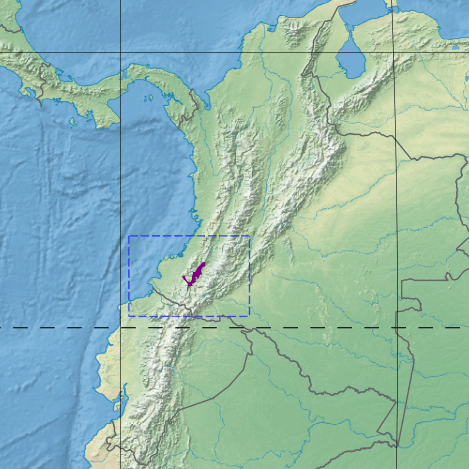The Patía Valley Dry Forests: A Unique and Threatened Ecosystem in Colombia
Nestled within the rugged Andes Mountains of southwestern Colombia lies a remarkable and often overlooked ecoregion known as the Patía Valley dry forests. In the rain shadow of the towering Andes, this arid landscape starkly contrasts the lush, verdant forests of the surrounding region.
The Patía Valley Dry Forests: A Unique and Threatened Ecosystem in Colombia
Nestled within the rugged Andes Mountains of southwestern Colombia lies a remarkable and often overlooked ecoregion known as the Patía Valley dry forests. This arid landscape, in the rain shadow of the towering Andes, stands in stark contrast to the lush, verdant forests that characterize much of the surrounding region. This creates a unique and fragile ecosystem home to a diverse array of specialized plant and animal life.
The Patía Valley dry forests cover an area of approximately 8,300 square kilometers (3,200 square miles), stretching from the Andes foothills in the north to the border with Ecuador in the south. This ecoregion is part of the Tumbes-Chocó-Magdalena biodiversity hotspot, one of Earth's most threatened yet biologically rich regions on Earth, underscoring the global significance and conservation value of the Patía Valley dry forests.
Harsh Environment and Unique Adaptations
The Patía Valley dry forests thrive in a challenging environment characterized by low annual rainfall, high temperatures, and pronounced seasonal variations. This arid climate, a result of the rain shadow effect created by the adjacent Andes Mountains, has given rise to a diverse array of plant and animal species that have evolved specialized adaptations to survive and thrive in these harsh conditions.
The dominant vegetation in the Patía Valley dry forests consists of drought-tolerant, deciduous trees and shrubs, such as the distinctive Ceiba, Tabebuia, and Prosopis species. These plants have developed intricate strategies to conserve water, including deep root systems, waxy leaves, and the ability to shed foliage during the dry season. The understory is often dominated by hardy, succulent plants and grasses well-suited to the region's hot, dry climate.
The Patía Valley's faunal diversity is equally remarkable, with a range of species that have adapted to the ecoregion's unique environmental challenges. Mammals, such as the endangered Spectacled Bear and the elusive Puma, have developed the ability to forage and find water in the sparse, arid landscape. Numerous bird species, including the endemic Chocó Vireo and the striking Crested Oropendola, have also found a niche in the Patía Valley dry forests, taking advantage of the diverse insect life and limited competition.
Threats and Conservation Efforts
Despite the inherent resilience of the Patía Valley dry forests, this unique ecoregion faces a range of threats that jeopardize its long-term survival. Deforestation, driven by factors such as agricultural expansion, logging, and the development of infrastructure projects, is the region's primary driver of ecosystem degradation in the area.
The conversion of native dry forest habitats into farmland, pastures, and other land-use activities has fragmented and lost critical wildlife corridors, making it increasingly difficult for species to move freely and maintain viable populations. Additionally, the impacts of climate change, including more frequent and severe droughts, pose a growing challenge to the delicate balance of the Patía Valley dry forests.
In response to these threats, various conservation efforts have been undertaken to protect the Patía Valley dry forests and the invaluable biodiversity they harbor. These include establishing protected areas, such as the Sanquianga National Natural Park, initiatives to promote sustainable land-use practices and community-based conservation initiatives.
The Importance of the Patía Valley Dry Forests
The Patía Valley dry forests represent a unique and irreplaceable component of the Tumbes-Chocó-Magdalena biodiversity hotspot, a region considered one of the most threatened yet biologically diverse areas on Earth. These arid ecosystems play a vital role in the region's overall ecological balance, providing essential ecosystem services, such as water regulation, soil conservation, and the maintenance of nutrient cycles.
Moreover, the Patía Valley dry forests are home to a remarkable array of endemic species, many of which have yet to be fully documented and studied by the scientific community. Protecting and continuing research in this ecoregion is crucial for conserving its unique biodiversity and understanding the complex adaptations and evolutionary processes that have shaped life in these harsh, dry environments.
As the world grapples with the ever-increasing threats of climate change and habitat loss, the Patía Valley dry forests stand as a testament to the resilience and adaptability of life on our planet. Preserving and restoring these remarkable ecosystems is an ecological imperative and a moral obligation, ensuring that the rich tapestry of life within them can be appreciated and safeguarded for generations to come.

Map depicting the location of the Patía Valley dry forests (in purple).